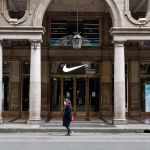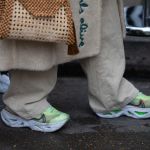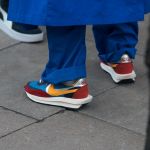.jpg)
How much is the Coronavirus costing the fashion industry
From fast fashion to luxury, every sector is starting to coming to terms with a decline in sales
March 27th, 2020
The Coronavirus pandemic has crystallized our daily lives in an in-home quarantine, the end date of which is still unknown. Leaving aside the human factor of this epidemic (which is taking thousands of lives), the spread of COVID-19 will inevitably have devastating consequences on the global economy, an impact that has not been fully understood and analyzed yet.
What is certain for the moment is that with thousands of closed stores, cancelled events, postponed collections, the fashion industry is starting to deal with the effect of COVID-19 on its turnover. Business and sales trends accurately reflect the spread and evolution of the same virus, which started in China and soon arrived throughout Europe, the United States and the rest of the world. If at the beginning the biggest drops and losses occurred in China, it is precisely from this territory that the brands are already slowly starting to start again, taking a breath of fresh air from the European and US market that will have the worst effects, living what China went through two months ago.
FAST FASHION
The effects of COVID-19, due to an already complicated financial situation, are clearly affected by the H&M group. The Swedish fast-fashion chain was forced to close 334 of its 518 stores on Chinese territory, thus accounting for a drop in sales of -24% in the first quarter of the year. And while the emergency slowly comes to an end in China, thus giving H&M the opportunity to reopen a small number of stores, H&M sees many of its European stores temporarily closing the shutters in Italy, France, Spain, Belgium, Austria, Greece and many other countries. A drop equal to, if not greater than, that occurred in China also on European territory will, therefore, be inevitable.
LUXURY
As WWD writes, the world of luxury by definition is the world of desire, not of need, and it is therefore natural that it too, if not to an even greater extent, will be affected by the crisis caused by the spread of COVID-19. The estimates speak of a loss that would amount to between $32 and $42 billion for the luxury sector, penalized by the closure of stores and large shopping centres, especially on Chinese territory. 35% of luxury sales are also insured every year by consumers of Chinese nationality: it is worth noting that the vast majority of these purchases take place abroad, not on Chinese territory, by Chinese citizens on vacation, that tourist shopping that at least in the first few months of 2020 it will disappear for obvious reasons. A strategic asset of luxury shopping is also the airports, which thanks above all to duty-free policies and tax breaks, have created a turnover that stabilized around $44 billion dollars last year. It is no coincidence that the major agglomerations of luxury are concentrating more and more on this type of sale, which for example for Kering is a very fast-growing sales channel. With the spread of the virus and the consequent closure of borders and airports, shopping in these places will drop by at least 70% this year.
The most dramatic case is that of Burberry, whose 44% of sales are made thanks to citizens of Chinese nationality. In recent weeks, sales of Burberry have fallen by 40/50%, and according to experts' forecasts will drop again, by 70/80% by the end of the month. In general, store sales fell 30% compared to the same period last year. 60% of Burberry single-brand stores are also closed between Europe, the Middle East, India and Africa, while this percentage rises to 85% when it comes to the United States.

SPORTSWEAR
Sportswear brands deserve a separate discussion, in particular the two giants Nike and adidas, which especially in the case of the Swoosh perfectly reflect the evolution in consumer shopping habits in this moment of quarantine. But not only: in addition to representing a fundamental and strategic market for them, China is for both the main production country, and it is therefore inevitable that the temporary closure of the Chinese factories has had tangible effects on the entire production of the brands.

After closing 2019 at its all-time high, following the spread of COVID-19, adidas found itself forced to cancel all wholesale shipments and declare that it planned to eliminate the excess inventory for the rest of 2020. While most of the factories in China have returned to operation, its distribution chain has suffered disruptions, without particularly affecting the company's general budget. adidas, as well as PUMA, makes nearly a third of its sales in Asia, and although many of its factories are back in business and production is slowly restarting, PUMA admitted that it did not expect such a drastic drop in sales in the Chinese markets, Singapore, Japan and South Korea.
The sad title of winner in this dramatic situation will bring it home Amazon, probably the e-commerce platform that is gaining the most in these quarantine times, so much so that it has to look for 10 thousand new employees, given the number of orders and the pace at which they arrive. Streaming platforms such as Netflix, Amazon Prime Video and Disney+, video conferencing apps such as Zoom and Skype, and couriers and various delivery services follow closely.


































.jpg)













.jpg)
.jpg)
.jpg)
.jpg)










































